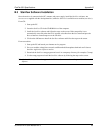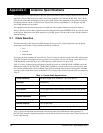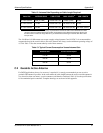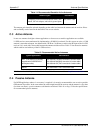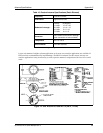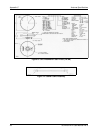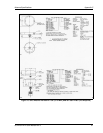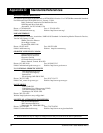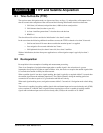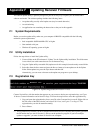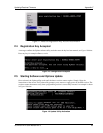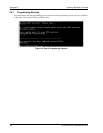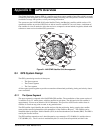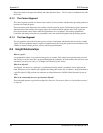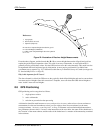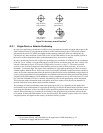
SUPERSTAR II User Manual Rev 3 63
Appendix E TTFF and Satellite Acquisition
E.1 Time-To-First-Fix (TTFF)
The receiver enters Navigation mode, see Operational States on Page 31, and provides valid outputs in less
than 50 seconds after completion of the self-test and the following initialization criteria have been met:
1. Valid time (±10 minutes) and position data (±100 km) from actual position
2. Valid almanac data (less than a year old)
3. At least 4 satellites greater than 5° elevation above the horizon
4. HDOP < 6
The time allowed for self-test and device initialization is less than 5 seconds.
In the case where the following additional conditions are met, the TTFF is reduced to less than 30 seconds:
• Unit has not been off for more than a week before nominal power is re-applied
• Last navigation fix occurred within the last 2 hours
• Valid ephemeris data (less than 4 hours old) for at least 5 satellites
With no initialization, the time from power application to valid navigation output is typically less than 3
minutes.
E.2 Re-Acquisition
Re-acquisition is the resumption of tracking and measurement processing.
There is no disruption of navigation data output when a satellite signal is lost unless there is a power
interruption for a period of less than or equal to 200 ms. Also, the receiver re-acquires the satellite signal within
0.3 seconds after satellite visibility has been restored.
When a satellite signal is lost due to signal masking, the signal is typically re-acquired within 2-3 seconds after
the satellite signal meets the minimum input levels. The vehicle dynamics during the masking period are
assumed to be less than or equal to 0.5 g acceleration and 100 m/s velocity.
When total signal masking occurs, navigation resumes within 3-5 seconds of a Navigation mode criteria being
met.
The receiver is capable of acquiring satellite signals with a minimum input carrier-to-noise density ratio (C/N0)
to the correlator of 34 dB-Hz. Once a signal has been acquired, the receiver is capable of tracking satellite
signals with a minimum input carrier-to-noise density ratio (C/N0) to the correlator of 31 dB-Hz.



